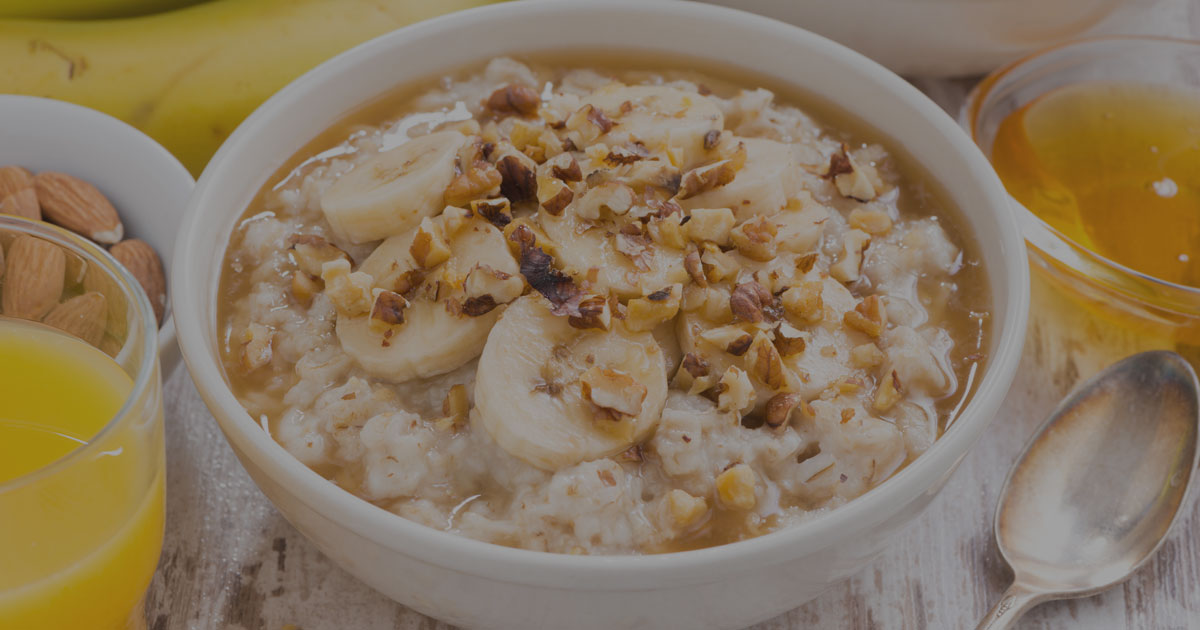As race day nears, nerves and anxiety start to set in. Race day can be full of surprises. Instead of allowing your fueling to be an unknown variable, go into your race prepared with a fueling plan. Lack of proper fueling on race day can jeopardize all your hard training – don’t allow that to happen to you!
Try these tips to create a successful race day nutrition plan that works for you. Remember; do not try anything new on the day of your race! Stick with what you know works, and that you have practiced with. Practice these fueling tips on your long run days to train your gut. If you have never incorporated nutrition into your training plan, start slow and build up as your gut adjusts.
1. Eat a fueling breakfast
Breakfast is your base for endurance and power during your race. This is the time to top off your glycogen stores after fasting all night. Avoid being under-fueled by consuming a good breakfast 3-4 hours prior to your race. It should contain a moderate amount of carbohydrates and protein, but limits fiber and fat. Eat another small carbohydrate containing snack 30 minutes to an hour prior to your race. This is the opportunity to top off glycogen stores. Experiment during your training to see which foods settle best before long runs.
2. Hydrate
Make sure to drink water with breakfast, and continue to drink up until the race. Bring a water bottle with you to sip on every 15 minutes until the start. Electrolytes can help with absorption of fluids, and should be consumed along with water prior to your race, as well as throughout your race. Once the race begins, start drinking within 30 minutes to prevent dehydration; once you are dehydrated you won’t be able to catch up. You should be consuming 4-8oz every 15-30 minutes throughout the race to minimize dehydration and maximize performance.
3. Front-load fuel
Start fueling sooner rather than later. Don’t wait to hit the wall to think about fueling. Once you hit the wall it means you have already depleted your glycogen stores and energy. You are less likely to want to fuel your body in the second half of the race due to exhaustion. Start fueling within the first 30-45 min into the race and continue consuming fuel every 15-30 minutes. The goal is to consume 30-60g of carbohydrates per hour to assure that your muscles have enough energy to get you through the race.
4. Alternate fuel & fluids
Fuel every 15-30 minutes and alternate your fuel- sports drink, gel + water, sports drink, gel + water. Consuming water with gels/chews helps with gastric emptying and provides energy to your muscles quickly. Make sure that you are replacing your electrolytes throughout the by alternating sports drink, and a gel with water, not just having water. Alternating fuel and fluids ensures that you will remain hydrated and fueled throughout the entire race. I like alternating sports drinks with gels so that I am getting a little bit of carbohydrates (energy) every 15 minutes, as well as fluids to keep me hydrated.
5. Refuel
You have just completed a very rigorous activity, your body is completely drained, help speed your recovery with good a good refueling plan. Refueling within 60 minutes after a race can enhance recovery. This is due to an increase in heart rate which enhances nutrient delivery to your muscles to start tissue repair. Replenish your muscle glycogen after your race with a carbohydrate rich snack. Repair your muscle by including quality protein as part of your recovery snack. Rehydrate with fluid and electrolytes. Aim for a snack that contains 30-60g of carbohydrates and 15-25g of protein for optimal recovery. It takes 24-48 hours to fully replace your glycogen stores if they have been depleted, so continue to eat well-balanced meals and snacks.
Foods with 30-60g carbohydrates:
1-2 pieces of fruit, ½-1 cup dried fruit, 1 cup oatmeal, 1.5 cups chocolate milk, ½-1 bagel, and 3/4 -1 cup pasta or rice
Foods with 15-25g protein
2 cups milk, 1 cup Greek yogurt, 3 eggs, 3-4oz deli meat, and .5 to 1 cup nuts
This is my fueling plan to give you an example of how to create one:
Breakfast: 3-4 hours prior to long run/race
1 cup old fashioned oats made with ½ cup almond milk (dairy on race day does not agree with my stomach, but regular milk is great if you can tolerate it!), 1Tbsp peanut butter, ¼ cup raisins, 1 banana sliced, sprinkled with cinnamon, and I drink 1 mug of coffee (12oz) and 16oz glass of water. I continue to drink 4-8oz water every 30 minutes until I run.
Snack: 30 minutes prior to long run/race
1 Picky Bar – they are the perfect carb:protein ratio (4:1) to fuel a run, and I drink 4-8oz water with it.
Nutrition/hydration plan: long run (over 60 minutes)
Gatorade Endurance (lemon-lime) – every 30 minutes, starting at 15 minutes. Clif Shot Energy Gel (Razz, Strawberry or Vanilla) with water – every 30 minutes, starting at 30 minutes. I tried many different gels and chews, but the Clif Shots were the only ones that I was able to tolerate during a run.
Example
15min: Gatorade Endurance
30min: Gel & water
45min: Gatorade Endurance
1 hour: Gel & water
1 hr 15min: Gatorade Endurance
1 hr 30min: Gel & water
1hr 45min: Gatorade Endurance
2 hours: Gel & water
2 hr 15min: Gatorade Endurance
2 hr 30min: Gel & water
2 hr 45min: Gatorade Endurance
3 hr: Gel & water
Continue alternating fluids and fuel until run/race is complete. I usually do not consume fluids or fuel once I am 15-30 minutes to the finish. This is an aggressive hydration/fuel plan. If you have never consumed fuel during a run, start by alternating every 30 minutes instead of 15 and adjust as you train your gut.
Refuel: 30-60 minutes after long run/race
I continue hydrating with water and a Nuun tab to help replace my electrolytes. I prefer this to Gatorade after a run because it is lighter in flavor. If I am not going to have a meal within an hour, I have a snack containing carbohydrates and protein like a fruit and nut trail mix. If I am having a meal within an hour it is usually a deli sandwich with a piece of fruit and vegetables, with a glass of chocolate milk.
REMEMBER, everything is individual, so practice, practice, practice!


